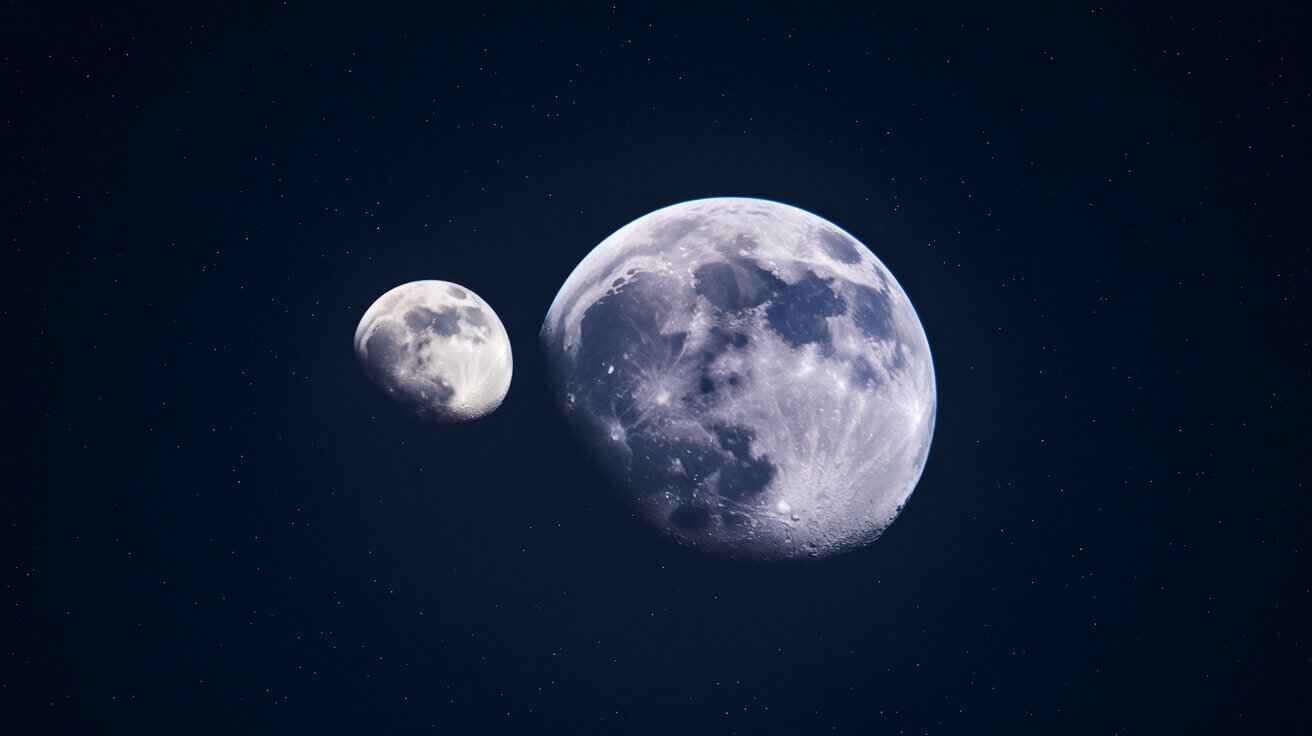
Earth has always had a single moon. However, something changed on September 29, 2024. Earth will get its second moon from 29 September to 25 November this year. This event has sparked excitement and curiosity around the world. This article will discuss this new second moon. How it came to be, and how long it might stay with us.
- What Is Earth’s Second Moon?
- When will Earth get a Second Moon?
- Can Earth Get a Permanent Second Moon?
- Effects of a Second Moon on Earth
What is the Earth's second Moon?
Earth can have a second moon. This is a small object that circles Earth for a short time. These are called "mini-moons". They don't stay long but are still Earth's temporary companions. But recently NASA-funded asteroid surveillance system, ATLAS (Asteroid Terrestrial-impact Last Alert), researchers initially caught a glimpse of this asteroid, which they named 2024 PT5, in South Africa with a telescope.
It is said that the Universidad Complutense de Madrid Scientists have monitored the asteroid's path for 21 days and discovered its future course. A study released by a joint group from the AAAA and published in the Research Notes of the AAs shows that 2024 PT5 is an Arjuna asteroid belt orbiting the sun.
When will Earth get a Second Moon?
Mini-moons come to the orbit of the Earth as well as go, and each of them has its timeline. The most recent mini-moon we know of, 2020 CD3, got to Earth's orbit around 2017, and it stayed together with us until the beginning of the year 2020 when it moved away from Earth. They are temporary residences for these small moons, though. They are only with us for some months or years before escaping Earth’s gravity and continuing their course through space.
The secondary moon of Earth may only appear for a limited period. Due to their size and speed, these mini-moons are often lost out of sight and minds of the public. More often than not, they over into Earth's orbit stealthily and leave with no applause, though they are only recognized if scientists are watching them.
Can Earth Get a Permanent Second Moon?
The big question is whether Earth could ever get a second moon that stays forever. In theory, it is possible. However, it is unlikely. For a second moon to stay in orbit, it must balance with the gravity of Earth, the Moon, and the Sun. Finding this balance is very hard.
Most objects that come close to Earth either crash into it or move away. The gravity between the Earth and the Moon creates a stable system that is hard for another object to join permanently.
Effects of a Second Moon on Earth
This second moon is too small to have a major effect on Earth. Unlike our large Moon, which affects tides and helps stabilize Earth's tilt, the new mini-moon is not big enough to create noticeable changes. It will orbit quietly without causing any significant impact on our daily lives.
However, having a second moon, even temporarily, helps scientists learn more about how objects move in space. Studying mini-moons can provide valuable information about asteroids and how they interact with Earth's gravity.
Our planet gained a small moon on September 29th, 2024. Despite the small and barely visible moon, it illustrates the beauty of the cosmos and the awe our universe can share.
Although the second moon exists only briefly it presents a distinct possibility for scientists and stargazers to discover and be thrilled. Though we might not detect it physically or comprehensively recognize its presence the idea of two moons orbiting Earth briefly results in a unique magical feeling in our night view.
